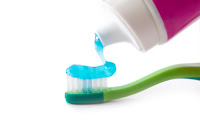Applying Pascal's Principle
By: Sanjeevraj Singh...1. A boy applies pressure on a tube of toothpaste. The pressure applied to the tube is transmitted throughout the toothpaste and forces it out of the opening of the tube.
2. Pascal Principle, states that:
a. when pressure is applied on a liquid, it is transmitted throughout the liquid uniformly.
b. the pressure acts in all directions.
Hydraulic System
3. Pascal's principle can be used as a force multiplier in a hydraulic system. A small input force,F1 on the small piston can result in a big output force, F2 on the big piston. the formula is:
F1 = F2
A1 A2
4. Hydraulic Jack lifting the back portion of a car:
(a) When the small piston is pulled up, valve opens and the other valve closes. Hydraulic oil is drawn
from the reservoir into the space under the small piston.
(b) When the small piston is pushed down, the other valve opens and the earlier valve closes. hydraulic oil
is forced through the other valve and rises the large piston.
(c) When the released valve is opened, the weight of the car will force the large piston downwards, pushing the hydraulic oil back into the reservoir. the car will be lowered.
4. Hydraulic Jack lifting the back portion of a car:
(a) When the small piston is pulled up, valve opens and the other valve closes. Hydraulic oil is drawn
from the reservoir into the space under the small piston.
(b) When the small piston is pushed down, the other valve opens and the earlier valve closes. hydraulic oil
is forced through the other valve and rises the large piston.
(c) When the released valve is opened, the weight of the car will force the large piston downwards, pushing the hydraulic oil back into the reservoir. the car will be lowered.
Example:
A dentist’s chair makes use of Pascal’s principle to move patients up and
down. Together, the chair and a patient exert a downward force of
2269 N. The chair is attached to a large piston with an area of 1221 cm2.
To move the chair, a pump applies force to a small piston with an area of
88.12 cm2. What force must be exerted on the small piston to lift the
chair?
Solution
Step 1: List the given and unknown values.
Given: F2 = 2269N
A1 = 88.12cm2
A2 = 1221cm2
F1 = xN
Step 2:
F1 = F2
F1 = F2
A1 A2
F1 = (2269 N)(88.12 cm2)
1221 cm2
F1 = 163.8 N
Disk and Drum Brake
5. Brake system:
- when the brake pedal of a car is pressed, pressure is exerted on the brake fluid and it is transmitted uniformly from the master cylinder, through the pipe, to the slave cylinders near the wheels
- this will move the slave piston forward, forcing the brake pads against the discs or drums attached to the wheels to slow down the car.
- however, it is important to note that this system works only because of the fact that the brake fluid is incompressible.
- If there is an air bubble in the system then the pressure applied to the piston in the master cylinder will not be effectively transferred to the slave cylinders as the air bubble is compressible. This will affect the moving of the pistons in the slave cylinders and result in the car not being able to stop or slow down efficiently.




